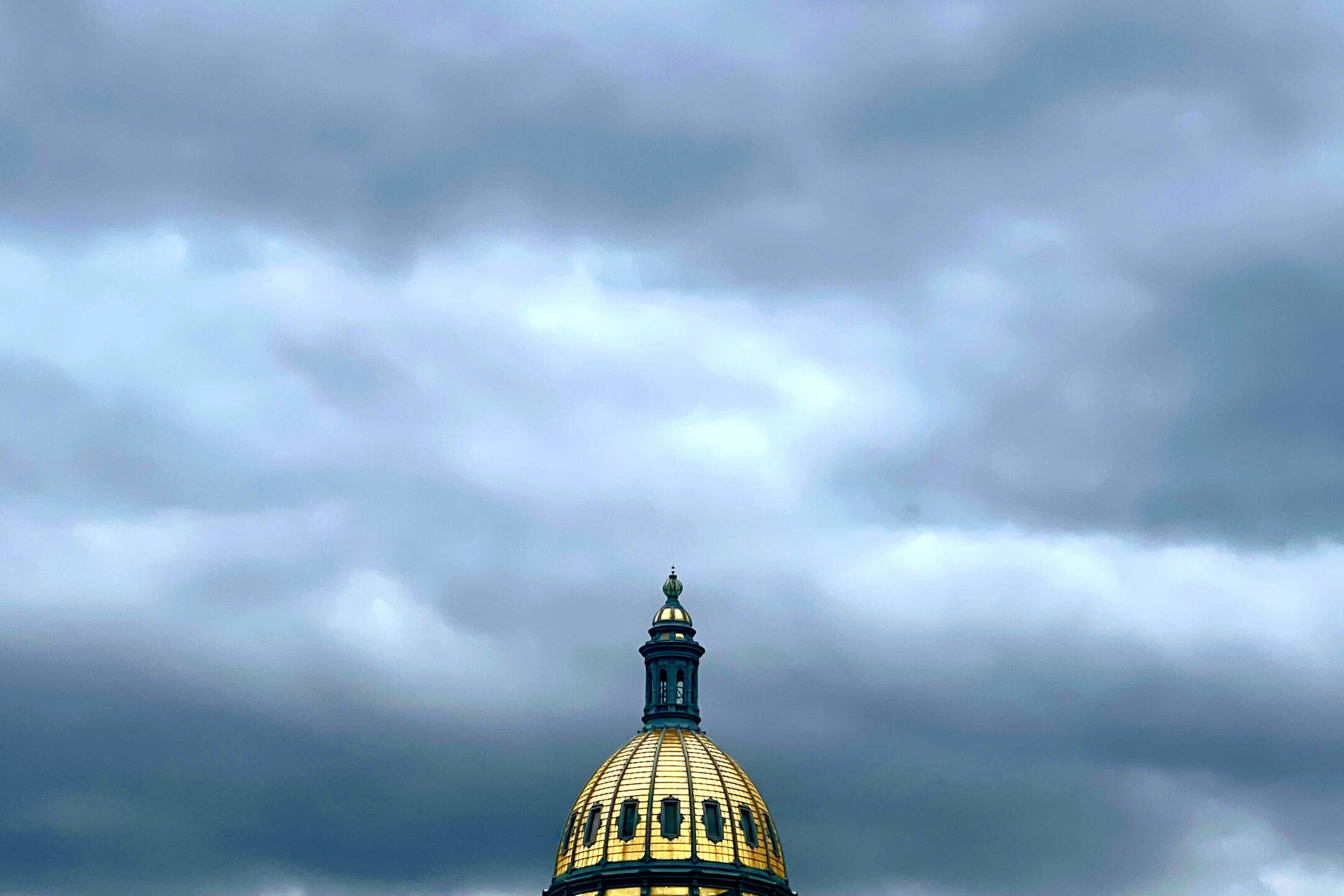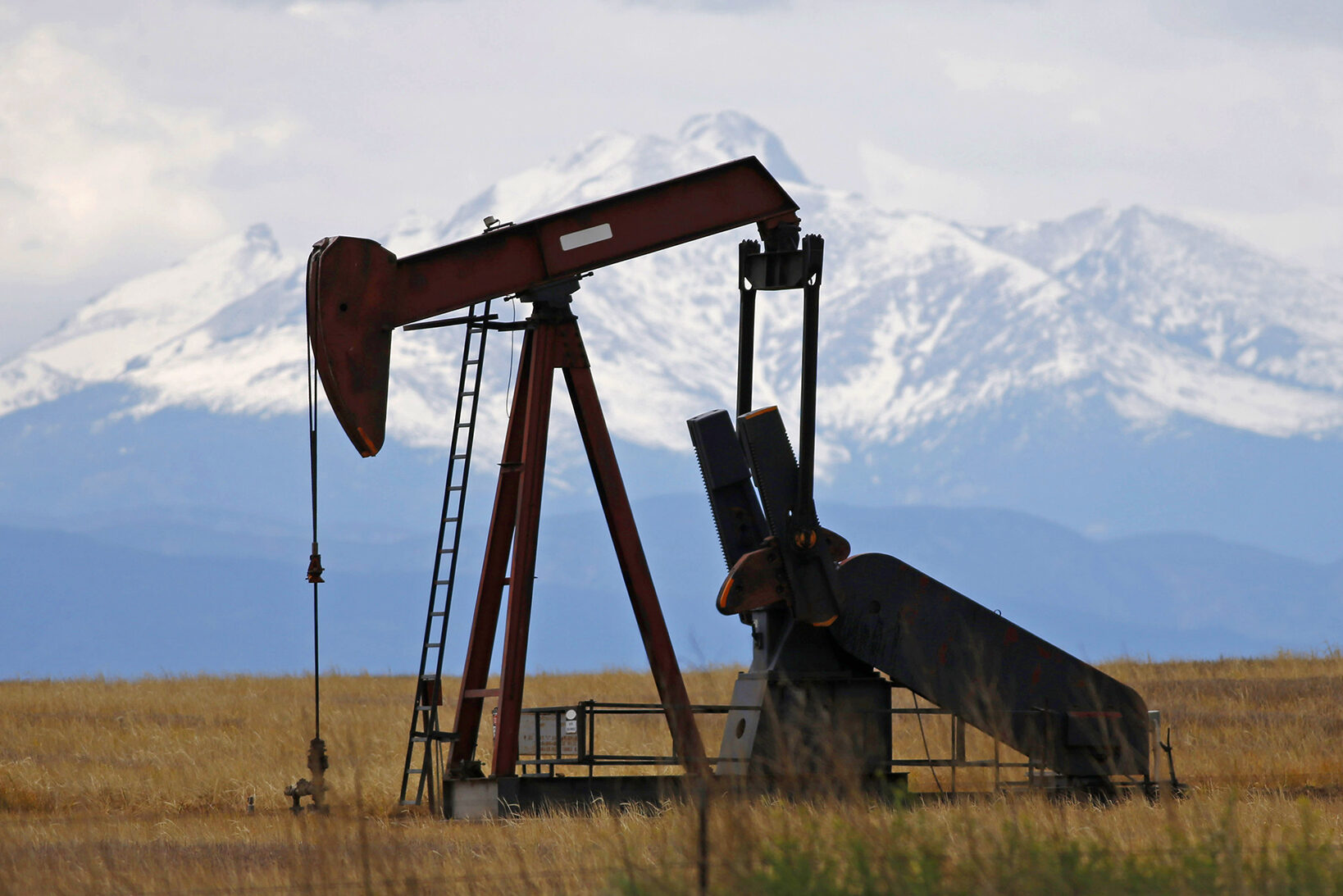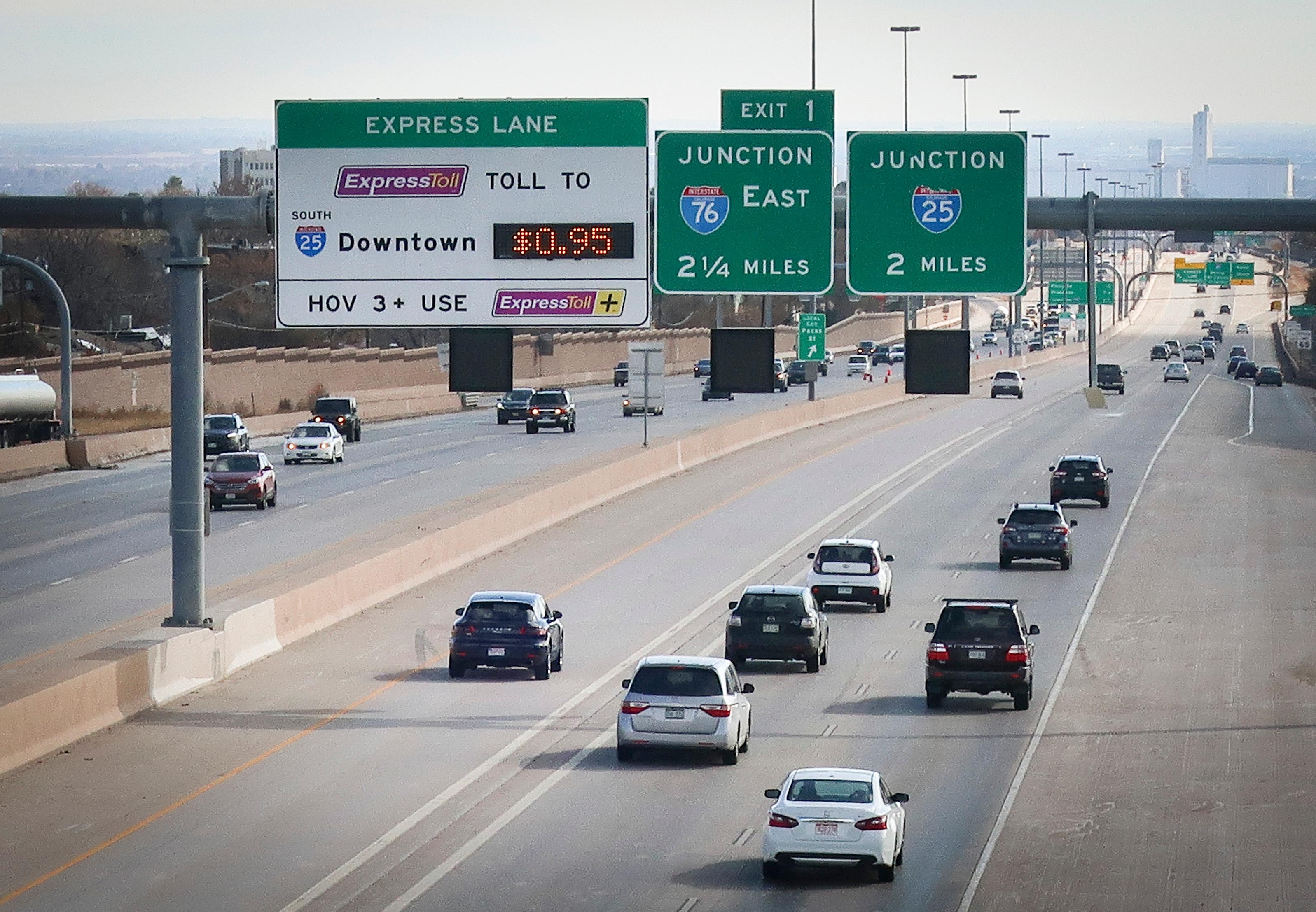
On a handful of Colorado's most crowded highways, drivers have a choice: Sit in traffic or pay a few dollars to pop into a toll lane. More Colorado highways will soon have that option, according to a new Colorado Department of Transportation Plan.
The Express Lanes Master Plan, which will be finished in December, envisions toll lanes — or as the state calls them, express lanes — on most miles of freeway in the Denver metro. The state’s even looking at adding them in heavily traveled pieces of Interstate 70 in the mountains and I-25 both north and south of Denver.
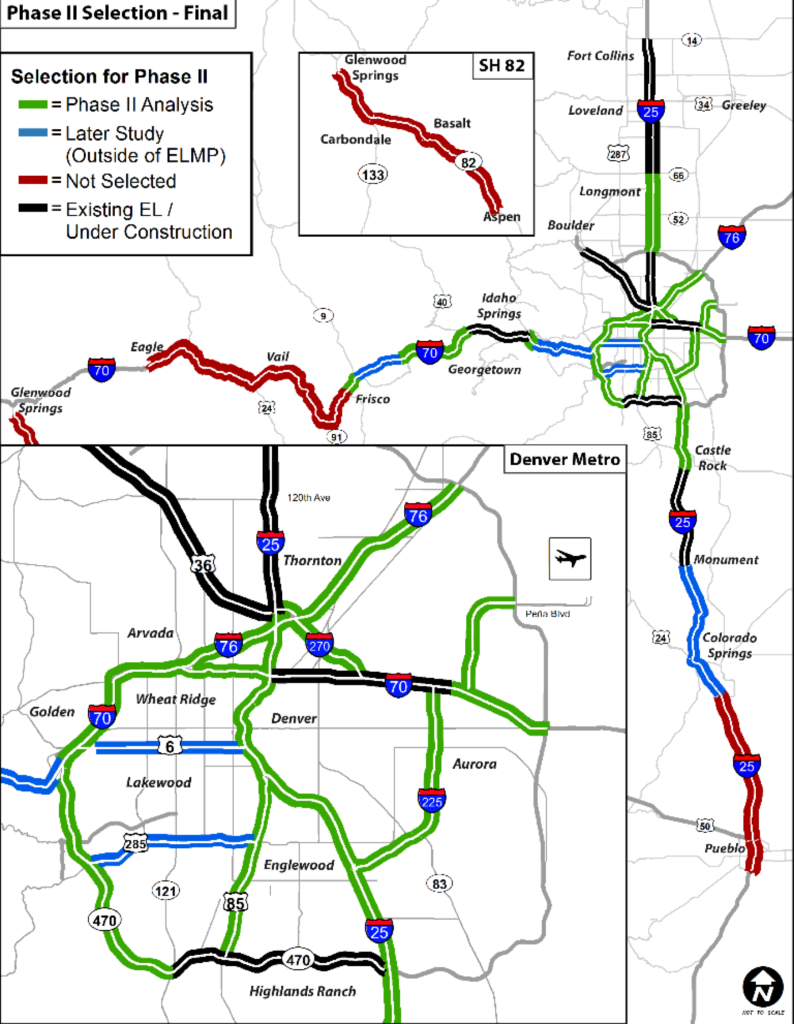
The plan envisions a network of these premium lanes, with prices constantly adjusted to be high enough to keep traffic flowing smoothly. But CDOT officials say they aren’t just for the wealthy.
“Drivers don't use the lanes every single day,” Nick Farber, director of the High Performance Transportation Enterprise, a division of CDOT, said in an interview. He cited this research from 2017. “It’s there when you need it. So if you're late to picking up your kids at daycare and you're going to be charged an extra day if you're not there on time.”
CDOT is attracted to express lanes for another big reason: the agency’s budget has grown only in fits and starts since voters passed the revenue-limiting Taxpayer’s Bill of Rights in 1992. And unlike free general-purpose lanes, express lanes bring in revenue.
One tool in fight against congestion
Since 2012, CDOT has at least considered express lanes in every new major project. Farber said the necessity became clear after the T-REX expansion of I-25 through the southern Denver metro in the mid-2000s.
That project extended the Regional Transportation District’s light rail system to the southeast and added free general traffic lanes. But within a few years, Farber said, the corridor had filled up again and travel times are now as slow as they were before the project.
“We can't build our way out of congestion,” he said.
Express lanes are an antidote to congestion, Farber said. If an express lane gets too crowded and travel speeds drop below 45 miles an hour, CDOT just raises the price to deter too many people from getting into it.
There are currently 56 miles of express lanes in the Denver metro, plus another 13 on eastbound I-70 near Idaho Springs. Farber said they've helped decrease travel times.
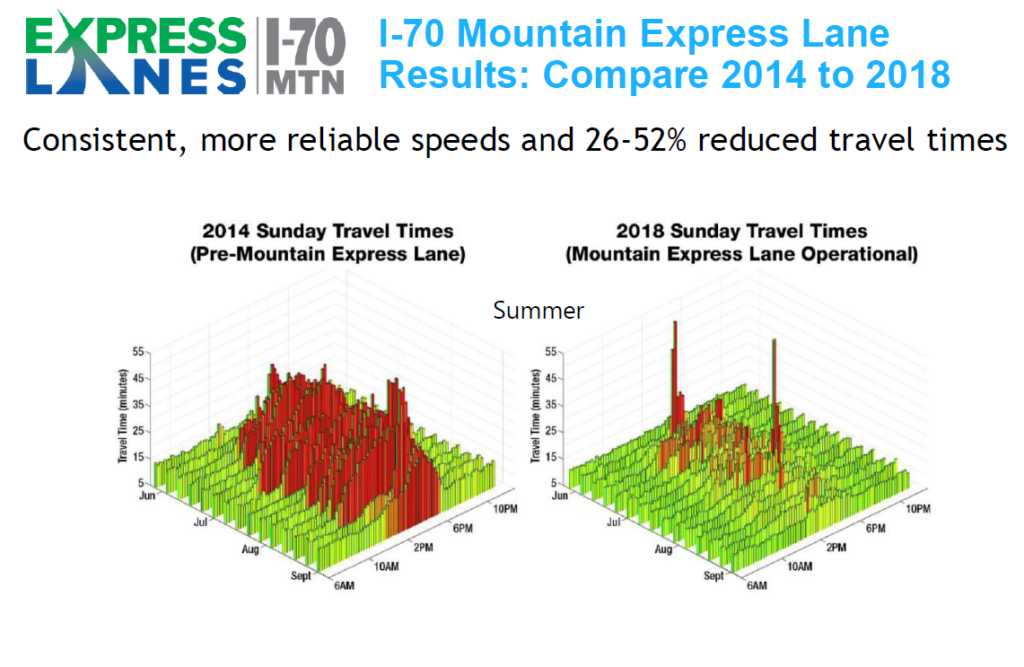
Another 142 miles are coming within the next five years, Farber said, when projects on C-470, I-25 north and south of Denver, I-70 in Denver, and westbound I-70 in the mountains are complete.
In addition to identifying new corridors ripe for express lanes, the plan also calls for them to be connected together more seamlessly.
“With direct connects, travel time reliability goes way up,” Farber told a Denver Regional Council of Governments committee meeting in October. “If we don’t have them … you’ll see bottlenecks and breakdowns at interchanges. That’s why we’re trying to connect those corridors, like I-70 and 270, I-25 and U.S. 36.”
Buses have benefited from express lanes, as well. Since RTD started running its Boulder to Denver bus in the new express lanes on U.S. 36 in 2016, travel times have decreased by 10 minutes on average, according to agency spokeswoman Laurie Huff.
“RTD looks forward to collaborating with HPTE on future express lane implementation,” Huff wrote in an email.
Such time savings could be in the cards for RTD buses that use future express lanes, if the agency can work through its current operator shortage and long-term financial struggles.
CDOT’s Bustang service on I-25 could also benefit. Unfortunately, for future users of CDOT’s SnowStang service to I-70 ski resorts, the current and future express lanes in Clear Creek County aren’t wide enough for buses.
Free lanes will most likely stay free
In most cases, Farber said, express lanes will be added to a highway as part of expansions. One exception could be the T-REX stretch of I-25, from Broadway to C-470, which doesn’t have much more room to expand. There, CDOT is considering converting shoulder space to a rush-hour-only express lane.
The other low-cost alternative would be to convert a general-purpose lane to an express lane, but Farber said state law requires CDOT get sign-off from every affected jurisdiction for that to happen.
“That’s why our policy is always to add a lane as an express lane instead of taking a general purpose lane,” he said.
That policy makes express lanes more palatable to motorists used to toll-free roads. But drivers CPR News spoke with at a gas station in Westminster, just off U.S. 36 and its express lanes, suggest that many are still skeptical about their benefits.
“We’ve had an immense amount of growth in Colorado,” said John Turco, a Westminster resident who said he drives U.S. 36 often. “And with all of these people moving in, all of the money should be there with just normal taxes.”
But Colorado’s gas tax has held steady at 22 cents a gallon since 1991, even as inflation has chipped away at how far that money goes. And voters have shot down recent statewide votes to increase spending for roads, including Proposition CC earlier this week.
So toll lanes are likely here to stay. Farber said motorists’ skepticism generally wanes as they get used to them, and use them. For U.S. 36 commuters like Krista Bajorek, they’re a no-brainer.
“It’s worth it to spend that extra $5 on the [express lane] rather than a Starbucks coffee,”Bajorek said.

